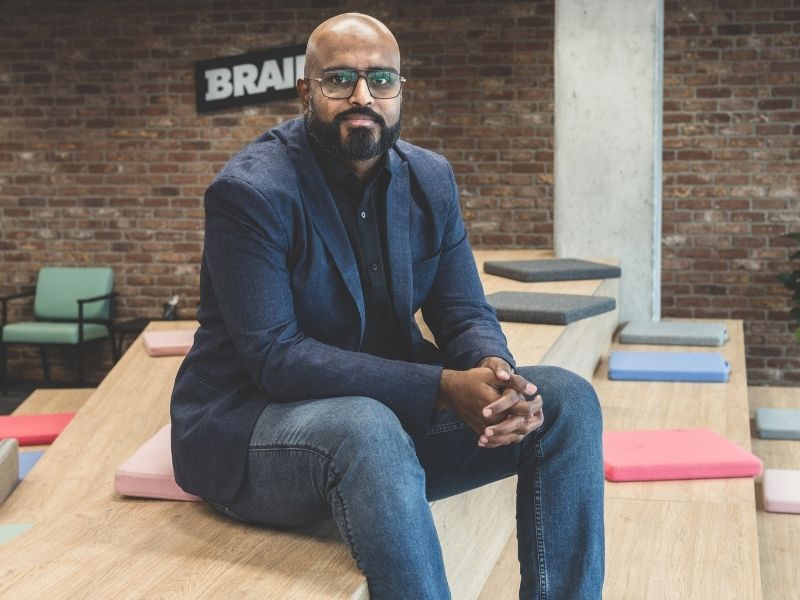Kraków-based Polish Edtech company Brainly (estb. 2009) is an online learning platform catering to over 350 million students, parents and educators from across 35 countries. Known for its free-of-cost assistance tool that empowers young learners to crowdsource, share and aid each other in a collaborative community complementing what they have learnt in school, the company launched its services in India in November 2015. Its India-specific educational content caters to students of all national and state boards while providing step-by-step explanations and videos pertaining to all K-12 subjects like math, science, social sciences, environmental science, computer science etc. Besides adapting to eight Indian regional languages, Brainly launched its ‘Brainly Math Solver’ product (in June 2021) to enable students to tackle complex mathematical problems. Speaking to Dipta Joshi of EducationWorld, Rajesh Bysani, Chief Product Officer (CPO) shares the company’s future plans and opportunities in the edtech sector.
Q. Tell us about Brainly’s India-specific plans?
A. We saw 10 million monthly users across India in November 2018 and currently have a monthly average of over 55 million Indian learners and knowledge-enthusiasts engaging on the platform. Brainly aims to effectively reach out to a wider audience with a diversified range of content to bolster the learning journeys of Indian students across geographical and linguistic boundaries which is why about a year ago, we enriched the platform with content in regional languages such as Hindi, Sanskrit, Marathi, Telugu, Tamil, Gujarati, Kannada, and Bengali. Recently we launched the Brainly Math Solver to enable students to tackle complex mathematical problems with the assistance of step-by-step explanations complemented by graphical/visual representation.
Q. Tell us something about the Math Solver programme.
A. Brainly Math Solver is a user-friendly product, available in the Brainly mobile app. Students can simply snap a picture of a problem or type it out manually on their devices in the absence of on-demand assistance. The artificial intelligence (AI) enabled system then analyses the problem to offer accurate solutions with detailed explanations equipped with graphical or visual illustrations to make the content more engaging and intelligible.
Q. The pandemic has resulted in a sudden growth in the Indian edtech sector. What according to you are the challenges for the sector today?
A. Pandemic became the occasion when the benefits of online learning came to the fore. This paradigm shift is here to stay for the foreseeable future. Rather than returning to the pre-pandemic mode of teaching, schools and universities will adopt a hybrid model of pedagogy to accommodate more students beyond those present in the physical classroom. For developing countries such as India where the dearth of quality educational institutions continues to be a major concern, this development promises to prompt a collective advance towards a better, brighter future for all.
A major roadblock in the advance in this direction is the misconception that edtech is here to replace the traditional pedagogy. Edtech today is complementing the traditional educational system by offering a tech-led patch on the issues prevalent in it. This tech-led renovation involves accelerating the administrative processes, optimizing the curricula by aligning it with dynamic developments in the industry, and providing the students with a 24/7 on-demand, online learning as well as skilling support system.
Another key challenge in view of this context involves the digital divide which inhibits a large section of society from accessing the advantages offered by edtech innovators. This disparity is especially dire among those belonging to underprivileged backgrounds living in remote and rural regions. While this digital disparity has narrowed down in the past few years, the progress has been slow. A dynamic public-private synergy holds the key to overcoming this challenge and democratising the online learning space at speed and scale.
Q. What are the future plans & opportunities that you see in India?
A. Innovations across sectors hinge upon how well an innovator can turn adversity into an opportunity. Edtech is no exception to this principle. Take the case of Brainly Math Solver, for instance. Online learning platforms and spaces are rife with guidance and assistance material that cover a broad range of subjects. However, not enough self-help resources were available to young learners to assist them on a particular SAT teaser or a complex algebra problem. This is the need-gap that Brainly aims to address through the Math Solver. Likewise, through Brainly’s surveys, we have found that students are looking for online learning material for unconventional subjects such as psychology, philosophy, behavioral science, regional languages, etc., as well as niche topics including financial literacy, data literacy, and tax literacy, among others. Moving forward, we aim to diversify our platform with educational content that meets the specific requirements of the increasingly inquisitive Indian student with a wide range of interests not just within but also beyond their syllabi.
Also read: Brainly becomes the most-visited edtech platform in India
Posted in Corporate, News



























